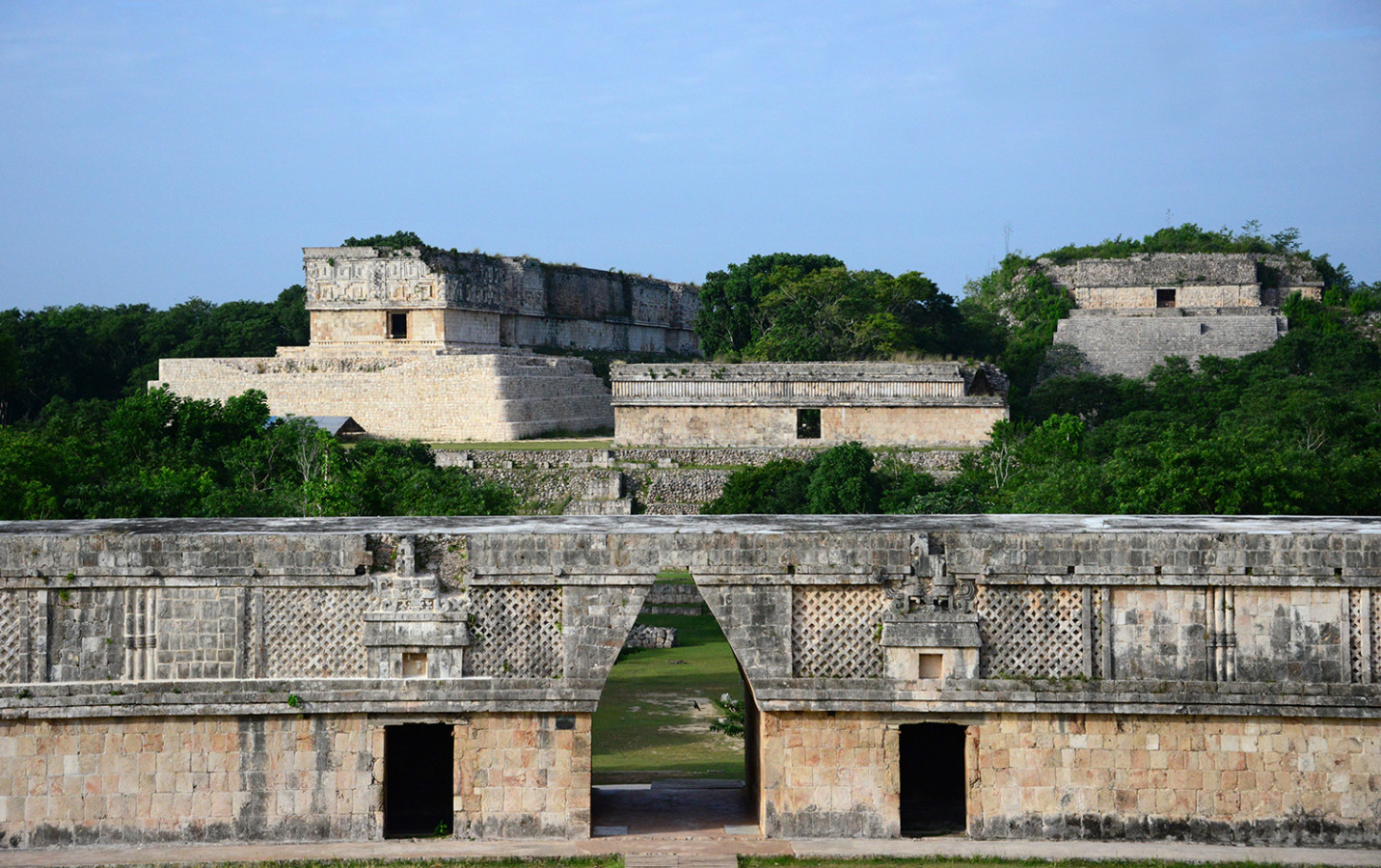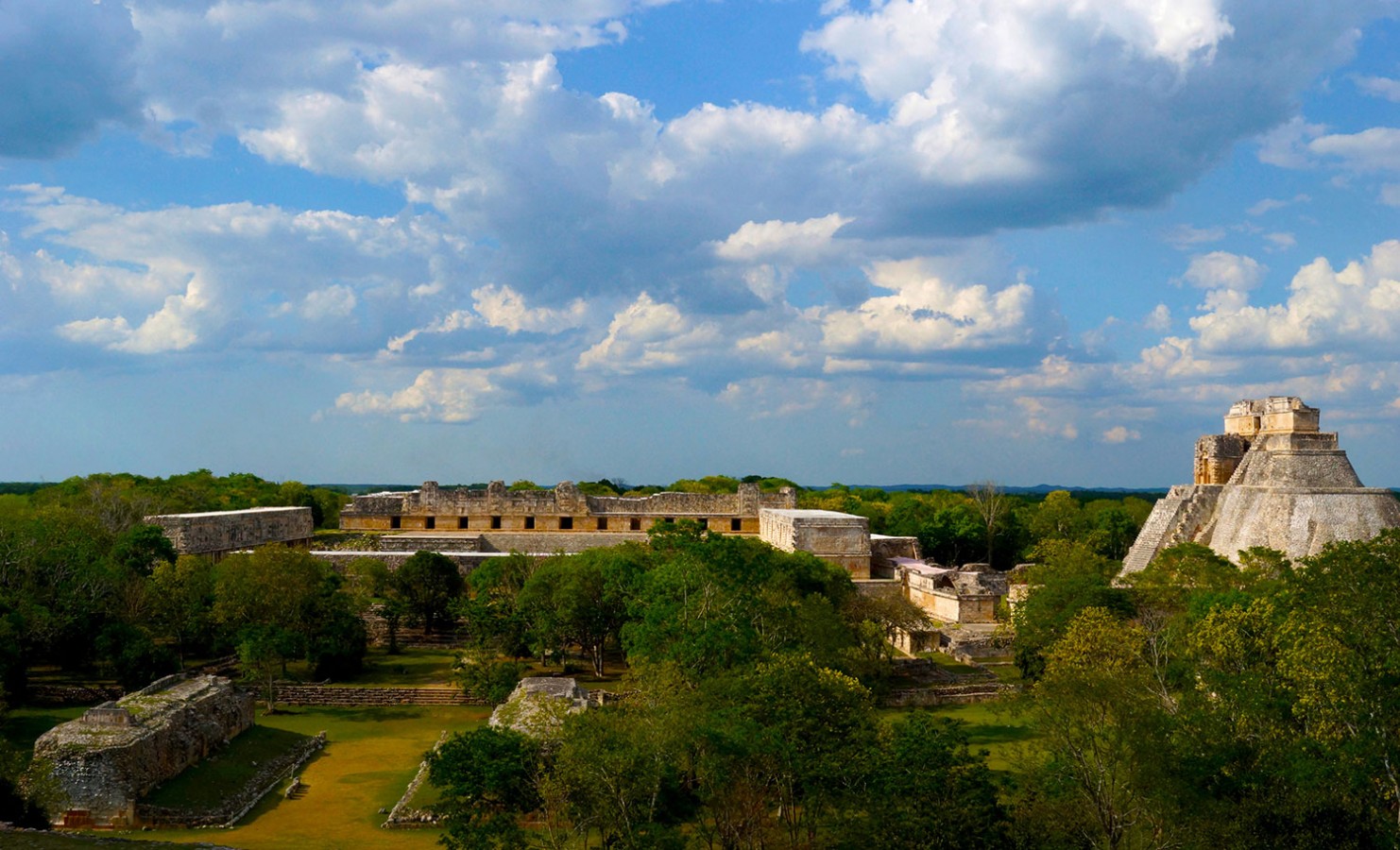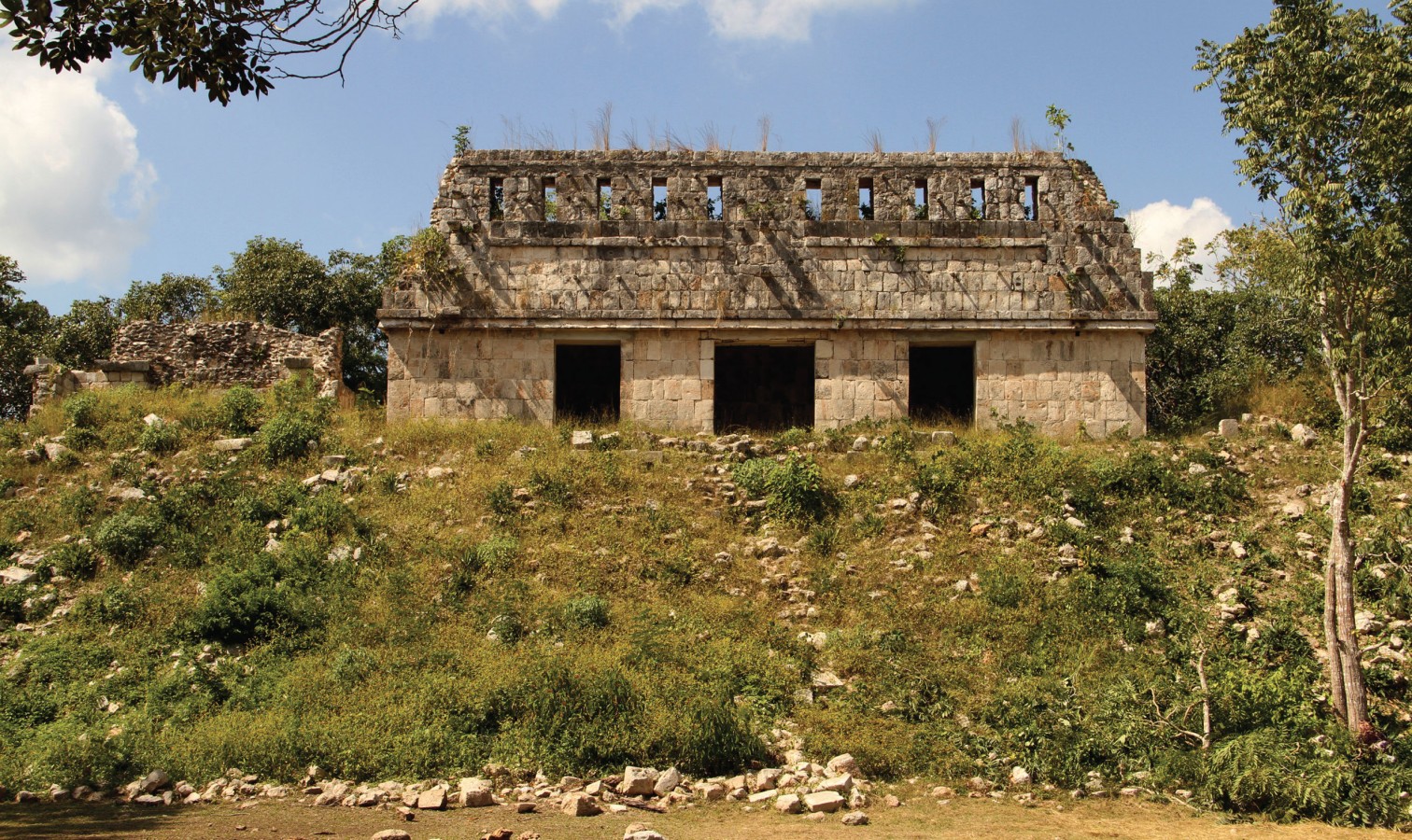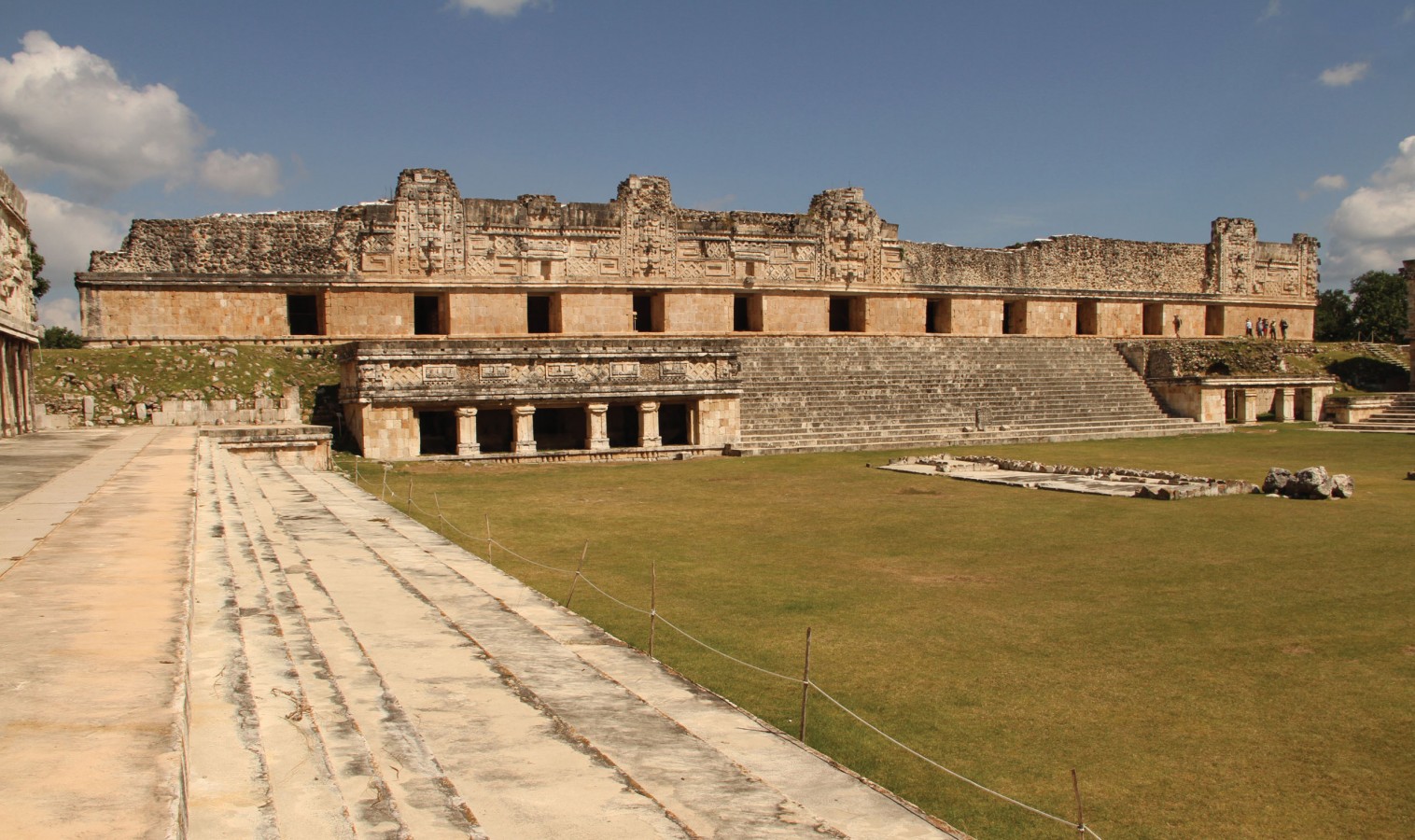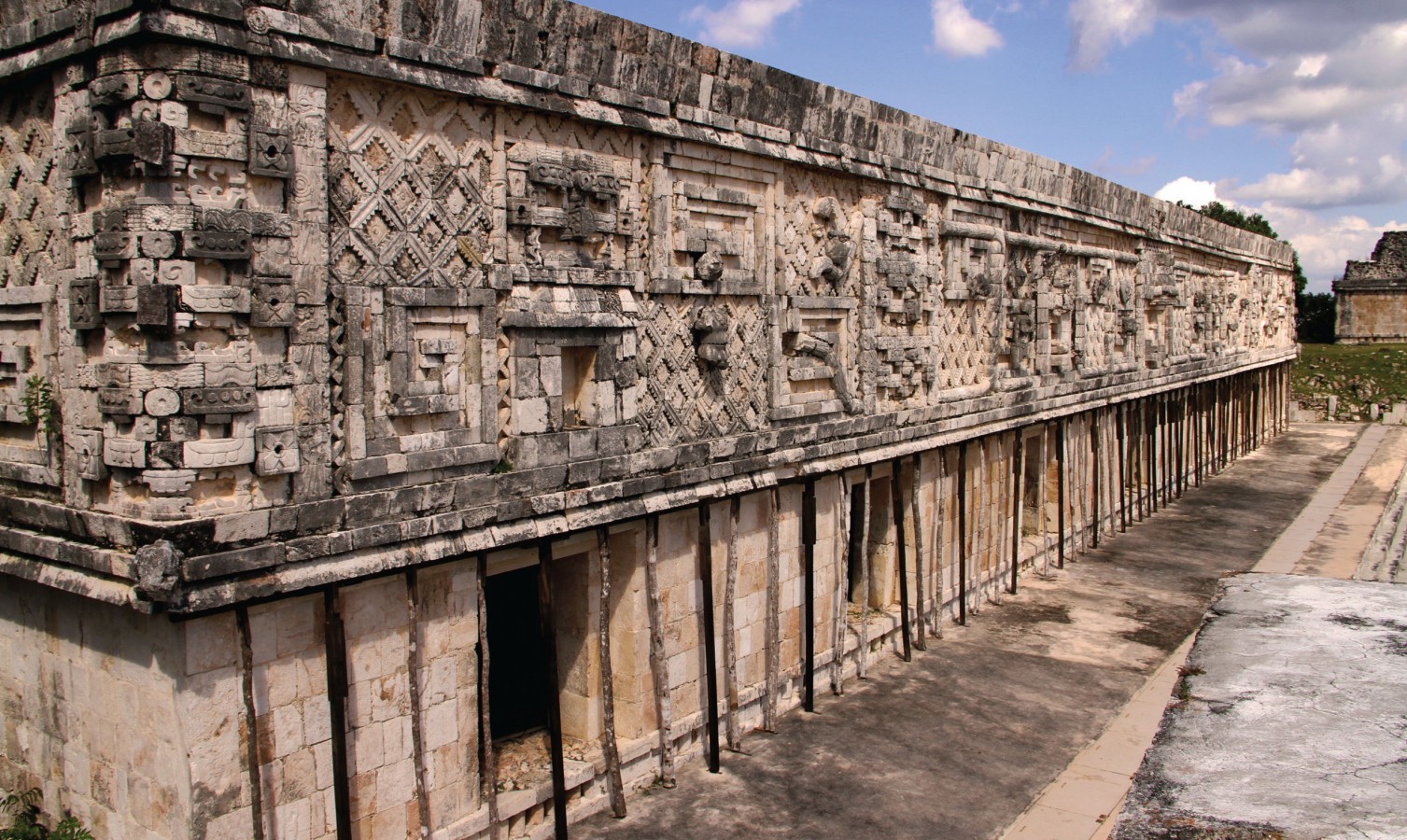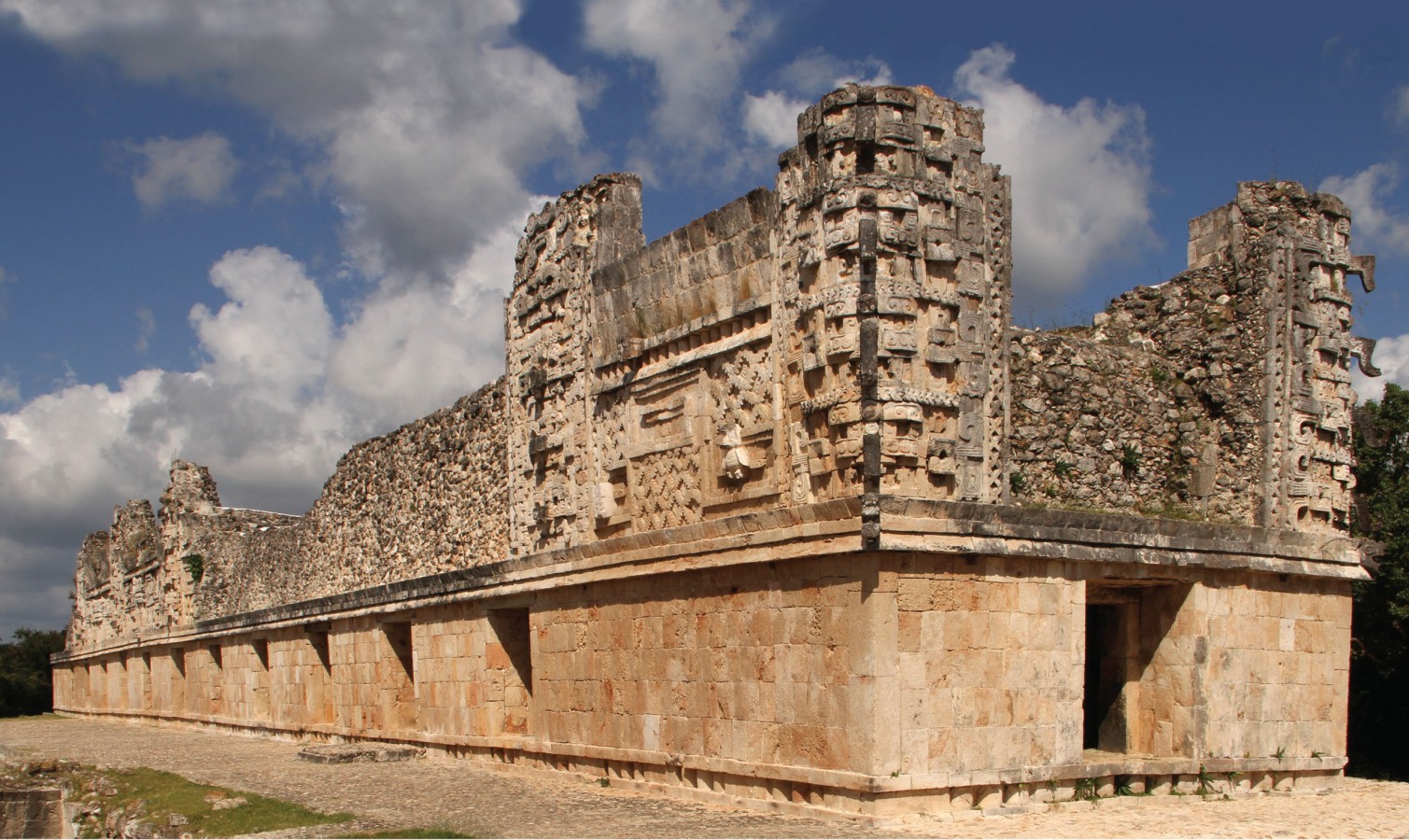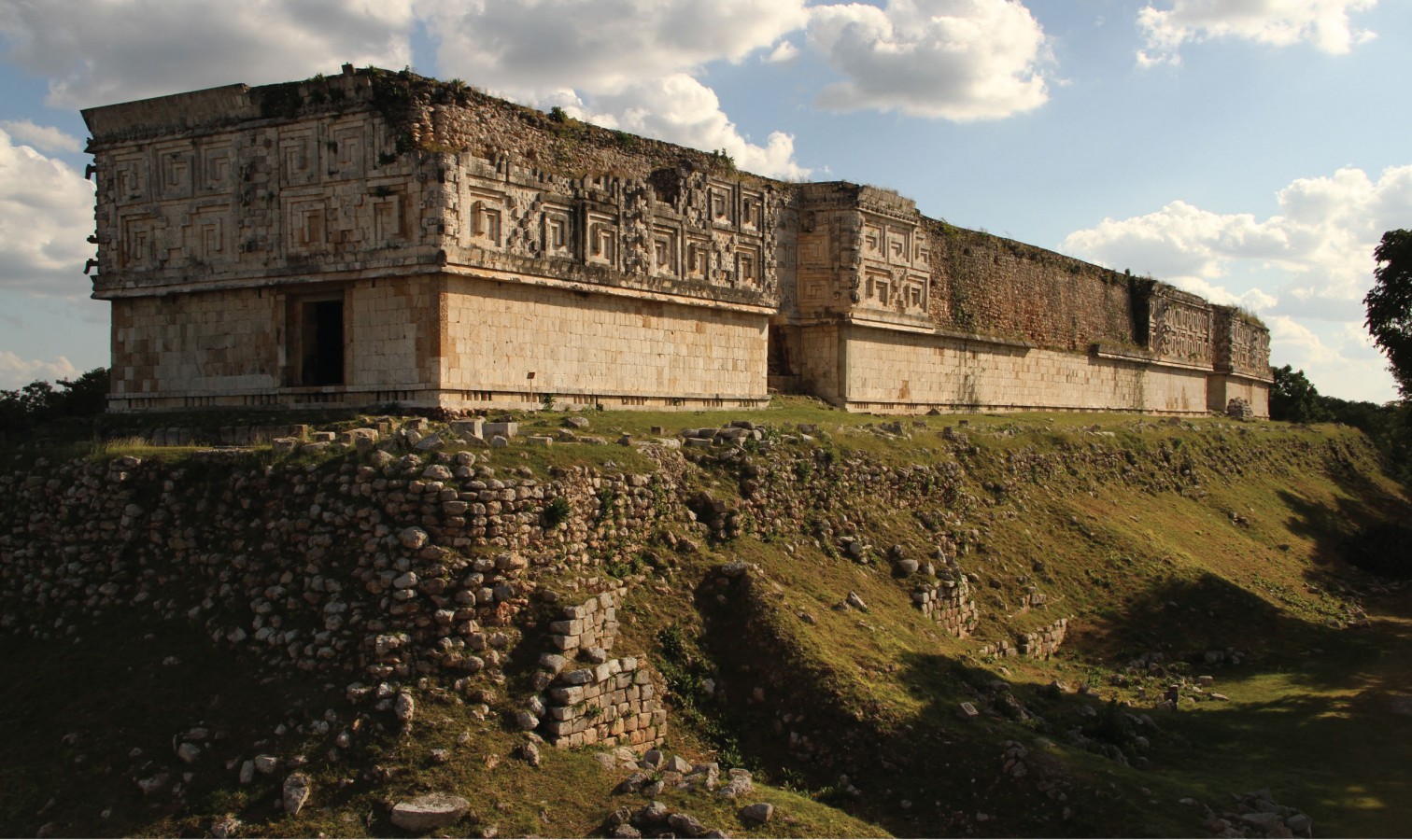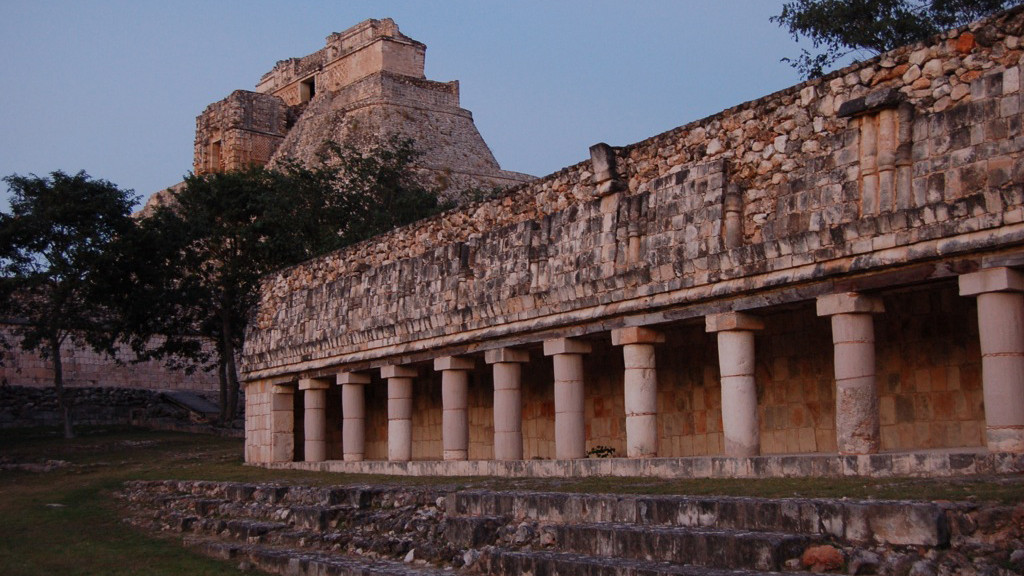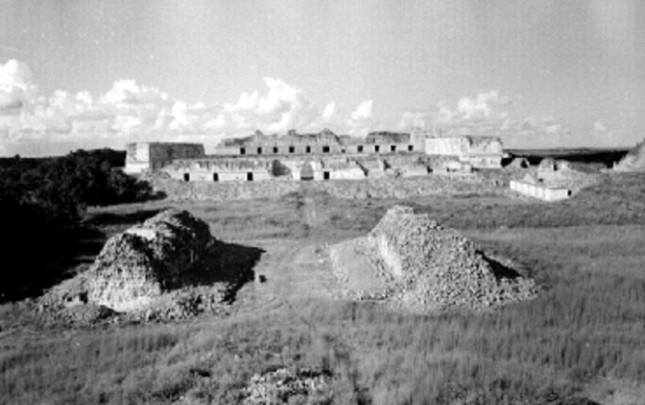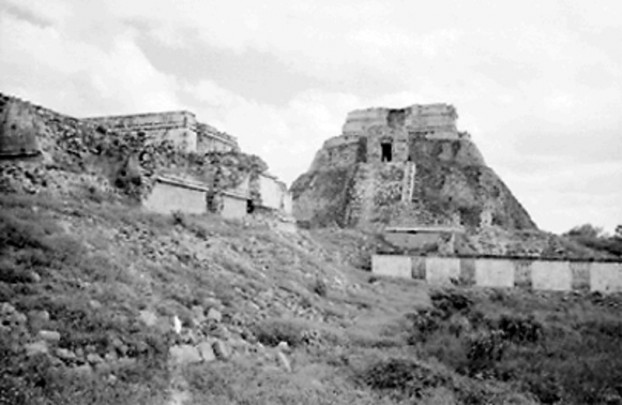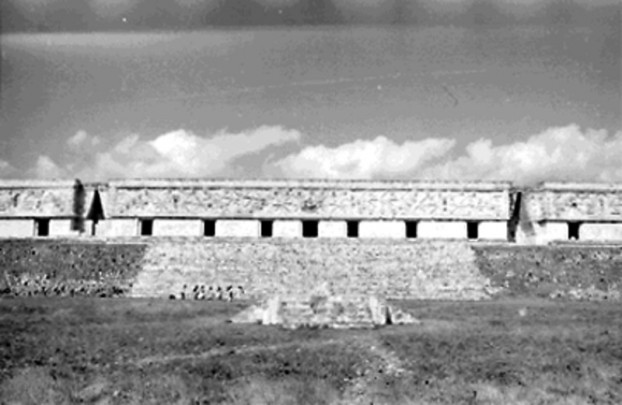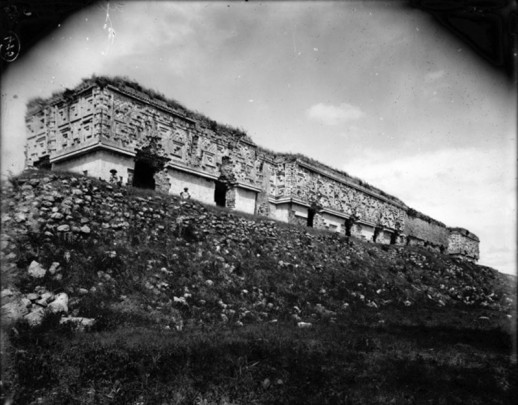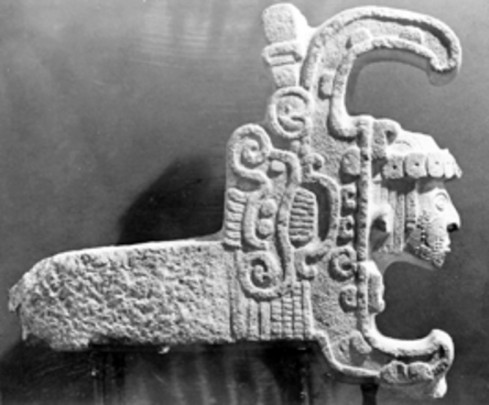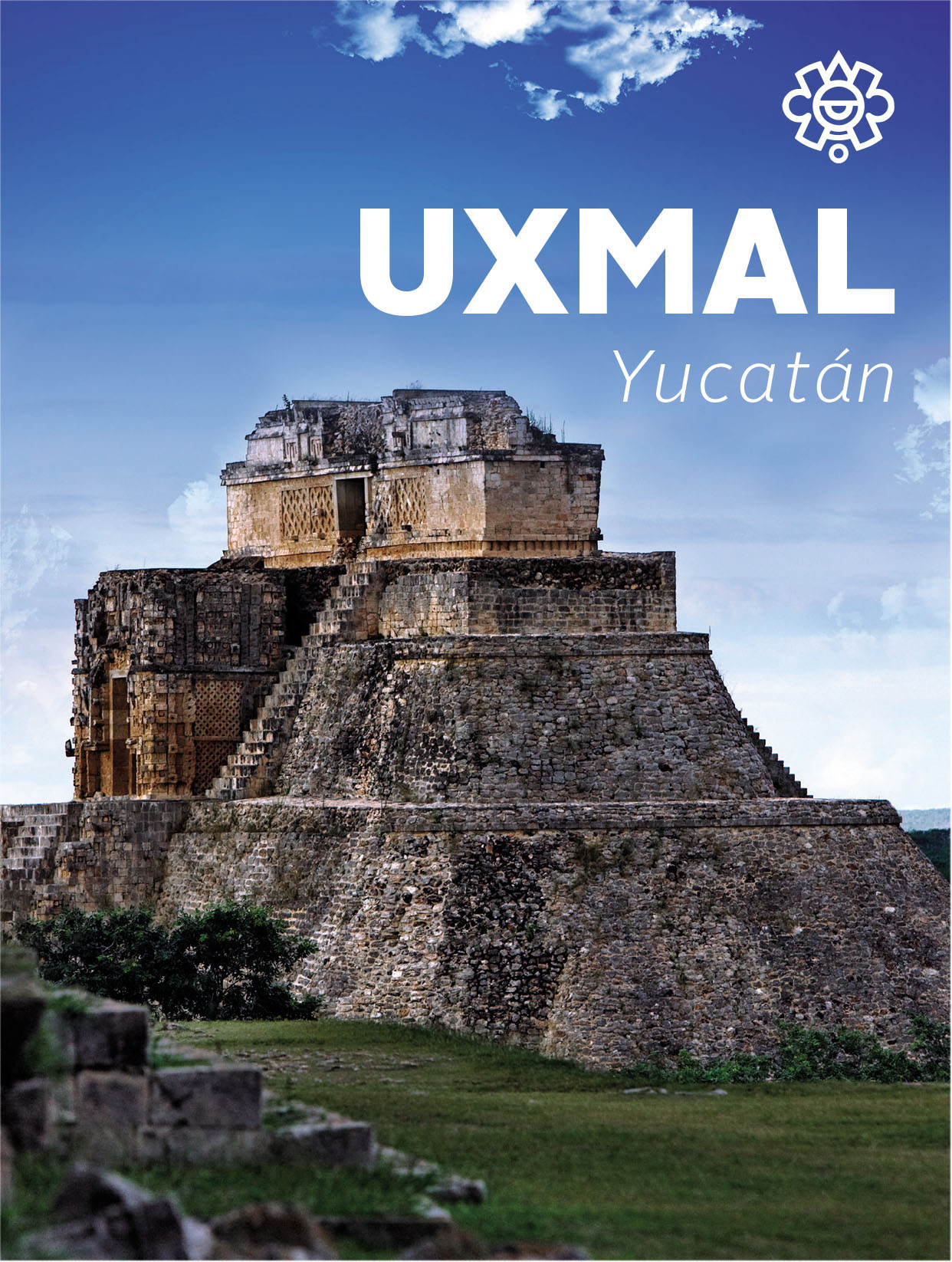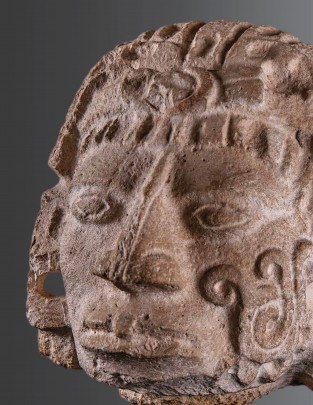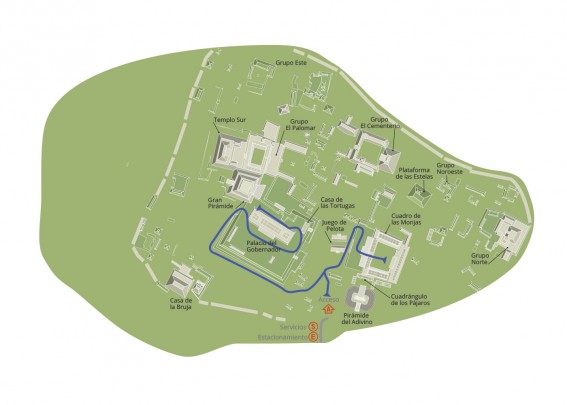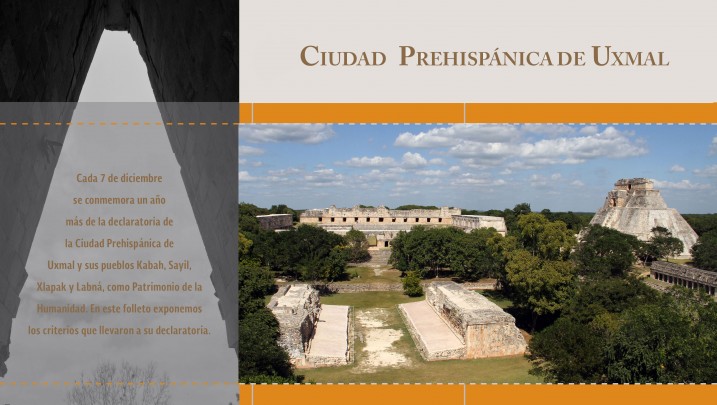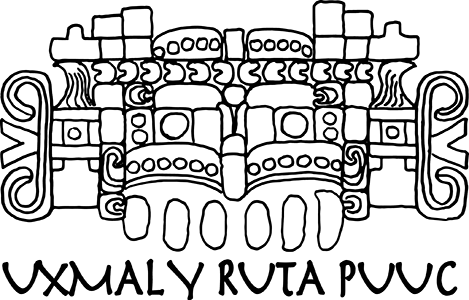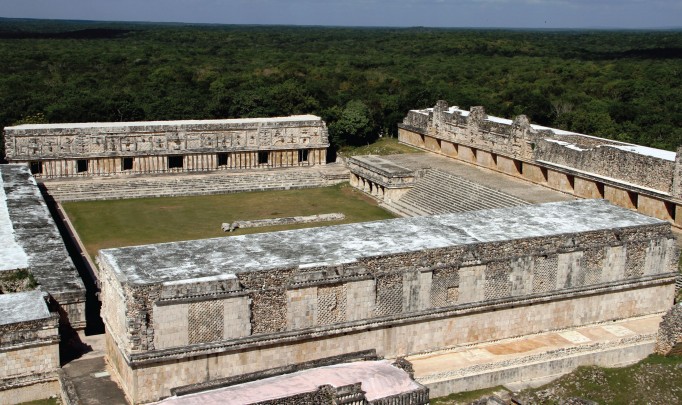Uxmal
Three times rebuilt or occupied or the place of abundant harvests. The Kak’nal glyph, possibly the emblem of the city, can be read as "the place of fire" or "the house of fire."
Uxmal is a magnificent and monumental city, one that astonishes visitors with its Pyramid of the Magician, the Nunnery Quadrangle and the House of the Doves. This is the most representative Puuc-style site with its decorated facades with masks of the god Chaac, fret patterns, hieroglyphic panels and tall roof combs.
About the site
The Puuc region is located in two present-day Mexican states: southern Yucatán and northern Campeche. Between the seventh and tenth centuries AD it was a place with scarce water but ingenious inhabitants, as evidenced by the number of chultuns (water tanks), ponds, cisterns, ducts and storage caves devised and built in the area. Unlike the rest of the low-lying peninsula, the Puuc region is broken by the hills of the Sierrita de Ticul and by the uitzoob (hills) of Bolonchén. The topography and the flora and fauna are reflected in Uxmal’s art.
The Uxmal site represents the best of the Puuc style of architecture and sculpture. It has finely cut and assembled stone mosaics with geometric reliefs and figures of humans and animals, small pillars and fine minor sculptures, all on a human scale and in honor of the god Chaac, the bringer of rains and fertility.
Its origin can be traced back to 500 BC, and by the seventh century AD it had a population of 30,000. A hill serves as the structural base for the pyramid, where large polished rocks were amassed and stone brick walls held together by mortar were the foundation for erecting walls of precious metals, monumental temples with rounded contours, roof combs resembling palm leaves and the widest and tallest vaulted roofs. Great esplanades were built, some on top of each other, others interconnecting. They stood behind a wall five and a half feet high which protected a set of superb monuments: the Palacio del Gobernador ("Governor’s Palace"), the Cuadrángulo de las Monjas ("Nunnery Quadrangle"), Los Pájaros ("the House of the Birds"), El Cementerio ("the Cemetery"), El Palomar ("the House of the Doves"), the Templo del Adivino ("the Temple of the Magician"), the Templo Sur ("the South Temple"), and the Casa de la Vieja ("the Old Lady’s House").
The city’s Maya name can be translated as “thrice built” or equally as “the place of abundant harvests.” The ruling priesthood and the religious ideology of command and obedience drove the people to work fervently cultivating the extraordinarily fertile soil. The masses and the nobility filled the sacred storehouses, and traded many of their agricultural products with nearby and distant regions. Their products included fine pottery vases, palm fiber and cotton textiles, basketwork, amate (bark paper), jewelry and many other valuable products. On the other hand, goods from distant places, such as obsidian from the Central Highlands or present-day Guatemala, or turquoise from the south of the present-day United States were brought to the metropolis.
Around the year 874 AD Uxmal was conquered by Chichen Itza and some changes were imposed on it, including the incorporation of masks of Tlaloc, the double-headed snake. From its apogee around the year 900 there began a slow but inexorable decline, accompanied by a reduction of the population.
The Uxmal site represents the best of the Puuc style of architecture and sculpture. It has finely cut and assembled stone mosaics with geometric reliefs and figures of humans and animals, small pillars and fine minor sculptures, all on a human scale and in honor of the god Chaac, the bringer of rains and fertility.
Its origin can be traced back to 500 BC, and by the seventh century AD it had a population of 30,000. A hill serves as the structural base for the pyramid, where large polished rocks were amassed and stone brick walls held together by mortar were the foundation for erecting walls of precious metals, monumental temples with rounded contours, roof combs resembling palm leaves and the widest and tallest vaulted roofs. Great esplanades were built, some on top of each other, others interconnecting. They stood behind a wall five and a half feet high which protected a set of superb monuments: the Palacio del Gobernador ("Governor’s Palace"), the Cuadrángulo de las Monjas ("Nunnery Quadrangle"), Los Pájaros ("the House of the Birds"), El Cementerio ("the Cemetery"), El Palomar ("the House of the Doves"), the Templo del Adivino ("the Temple of the Magician"), the Templo Sur ("the South Temple"), and the Casa de la Vieja ("the Old Lady’s House").
The city’s Maya name can be translated as “thrice built” or equally as “the place of abundant harvests.” The ruling priesthood and the religious ideology of command and obedience drove the people to work fervently cultivating the extraordinarily fertile soil. The masses and the nobility filled the sacred storehouses, and traded many of their agricultural products with nearby and distant regions. Their products included fine pottery vases, palm fiber and cotton textiles, basketwork, amate (bark paper), jewelry and many other valuable products. On the other hand, goods from distant places, such as obsidian from the Central Highlands or present-day Guatemala, or turquoise from the south of the present-day United States were brought to the metropolis.
Around the year 874 AD Uxmal was conquered by Chichen Itza and some changes were imposed on it, including the incorporation of masks of Tlaloc, the double-headed snake. From its apogee around the year 900 there began a slow but inexorable decline, accompanied by a reduction of the population.
Map
Did you know...
- According to the legend of the Uxmal dwarf, the Pyramid of the Magician was built in a single night.
- To avoid the displeasure of Empress Charlotte, several phallic decorations were removed from various structures at the site before her visit, in late 1865.
- The Nunnery Quadrangle is a royal palace.
- According to the hieroglyphic inscriptions, the House of the Governor, the Ballgame and the Nunnery Quadrangle were built during the reign of Lord Chaak (890-910).
- All the palace-type structures have a chultun (cistern).
An expert point of view
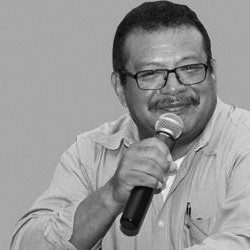
José Huchim Herrera
Zona Arqueológica de Uxmal
-
+52 (997) 976 21 25
-
This email address is being protected from spambots. You need JavaScript enabled to view it.
Directory
Director de la Zona Arqueológica
José Huchim Herrera
This email address is being protected from spambots. You need JavaScript enabled to view it.
+52 (997) 976 21 25
Administrador
Luis Fernando Cruz Pachecho
This email address is being protected from spambots. You need JavaScript enabled to view it.
+52 (997) 976 21 25

